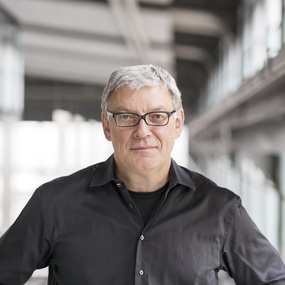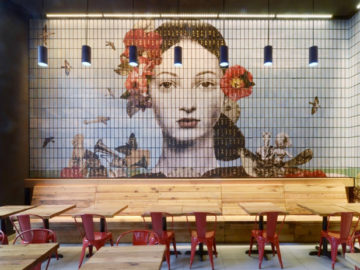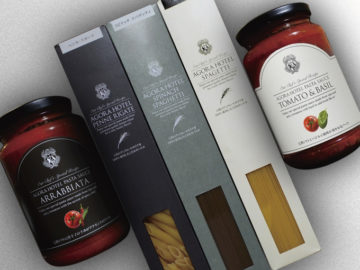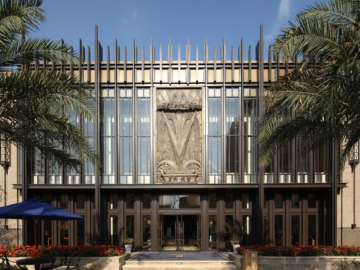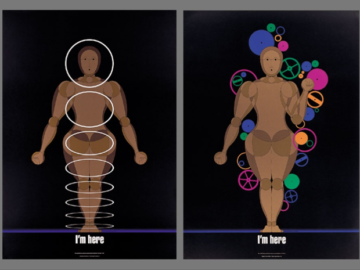In this Graphis Journal Q&A, Graphis Master Knut Maierhofer of KMS Team shares insights into his bold and innovative approach to design and branding. His story unfolds as one of risk-taking and exceptional creativity. From challenging norms to his admiration for design legends and American entertainment culture, Knut reveals the driving forces behind his successful career. His leadership at KMS Team, a hub for over 70 experts in various creative disciplines, showcases his unique blend of creativity, strategy, and effective management. This interview offers a glimpse into the mind of a visionary who continues to shape the world of design and branding.
Introduction by Dr. Peter Zec, Author, Publisher, & Design Consultant
Knut Maierhofer takes risks and emerges victorious. In 2003, I invited KMS Team and two other agencies to a pitch. The project involved all branding efforts for a world design exhibition called “Metaform.” Knut broke all of the pitch rules and gave us exactly what we wanted. His presentation was so sensational that several of these elements still have a place of honor in my office. He even questioned the name of the project, which all other agencies simply accepted. In his opinion, the world exhibition should be called “Entry,” with a red “Y” as an architectural key visual. I thought that idea was also fantastic. KMS Team still shines today as a creative workshop par excellence, and has produced scores of great digital designs. As the CEO of Red Dot and initiator of the Red Dot Award, I’m required to be committed to total neutrality—but I can’t deny my fascination with Knut Maierhofer and KMS. This team is passionate about every project, devotes its energy to thoroughly understanding it, and always delivers top-notch designs as a result.
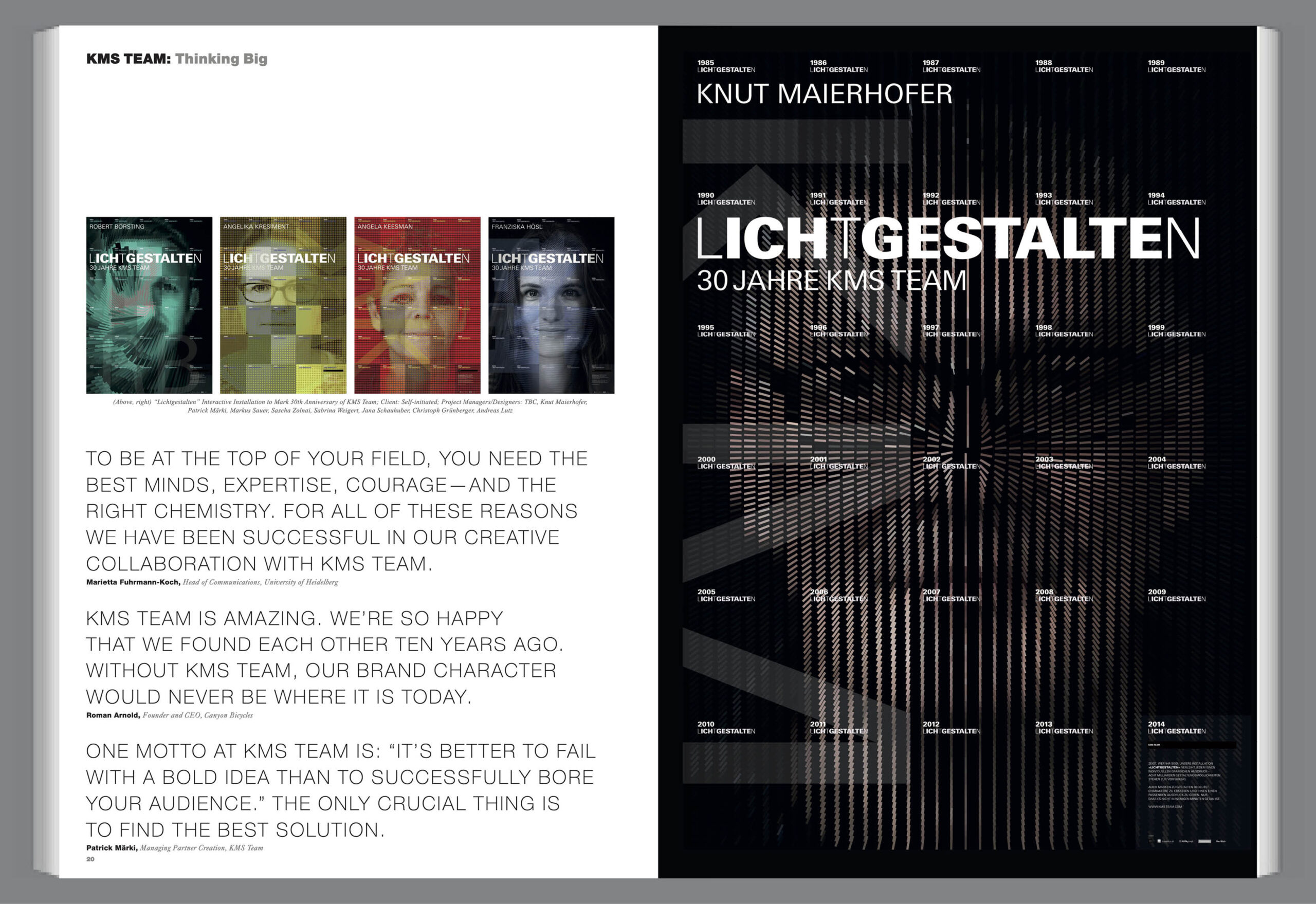
What inspired or motivated you into your career?
I’m really an adrenaline junkie. When I started doing my first projects in school, I found it incredibly exciting to experience the adventures involved in this business, especially when doing something entirely new, which is how literally every project starts. Even today, I still find it thrilling when I get to explore industries for which I’ve never worked.
What is your work philosophy?
Don’t talk about it: Do it. My start in this business was shaped by my desire to make something amazing out of each project, and this is still how I approach my work today. You can only achieve this if you have outstanding people at your side—really crazy ones—who share your goals.
Who is or was your greatest mentor?
I was lucky that one of my first clients, a publisher, encouraged me to follow my path while everyone else around me criticized my entrepreneurial ambitions.
What is the most difficult challenge you’ve had to overcome?
The greatest challenge is to stick to your goals, even when everyone says that you don’t have a chance.
Who were some of your greatest past influences?
Of course, I am very influenced by the German design legends: Bauhaus, Dieter Rams, and Otl Aicher. I’ve also always been fascinated with America’s entertainment culture—its great cinema and comics. I’ve always strived to combine German logic and rationality with emotion and excitement.
Who among your contemporaries today do you most admire?
I think it’s interesting how Jonathan Ive is inspired in his work by Dieter Rams, the legendary designer at Braun, and continues to develop his approach to design. We sometimes meet clients who would like to look like Apple. I always ask them if they also have a revolutionary idea that will change the world.
How many people are involved in KMS Team?
KMS Team employs over 70 experts in strategy, digital, branding, communications, implementation, and experience.
How have you managed to build such a large creative force and keep it effective?
In order to manage creatives, you have to be one. Otherwise, you run the risk of missing the potential of a great idea. And everyone on the team needs to put their vanities aside. It doesn’t matter who comes up with the great idea. A great idea is a great idea—strong enough to stand by itself, independent from its creator.
Clearly, you are a great manager—how did you attain this skill?
I think you have to bring a number of different characteristics together: persistence and sensibility, creativity and strategic thinking, a willingness to take risks, and a sense of being grounded. After 30 years of experience, I believe that the best way to manage is to give everyone their own space and responsibility, and only provide impetus at decisive moments.
Are you still expanding your operations?
Some clients would like us to have a branch office in China. The most important consideration for me is what we need to achieve better results. For example, we have structured our business into the areas of strategy, digital, branding, communications, implementation, and experience simply because the contributions from these disciplines help us develop better solutions.
What would be your dream assignment?
I would love to advise a nation or entire state. The Netherlands is an excellent example. In the 1990s, they created a design for all of their state organizations, including the police department.
Who are your favorite people or clients you’ve worked with?
I think the people I enjoy working with the most are on my own team—above all, my Managing Partners Simon Betsch and Patrick Märki. We’ve experienced so many things together.
What are the most important ingredients you require from a client to do successful work?
Entrepreneurship and courage.
What is your greatest professional achievement?
Our agency.
What is the greatest satisfaction you get from your work?
When a client has dared to follow our concept, and their willingness to take a risk is rewarded with success.
What part of your work do you find most demanding?
More and more clients expect that we can handle increasingly complex work for less and less money. But we can only develop lasting solutions by approaching this work from the ground up. It’s really bad when people don’t stick to their word or agreements.
What professional goals do you still have for yourself?
My greatest goal is to make our team even more independent than it already is without negatively impacting our culture and the quality of our work.
What advice would you have for students starting out today?
Find out what truly interests and motivates you. This is a starting point to develop your strengths. Then, focus on this talent—but never forget to see the big picture and try new things.
What interests do you have outside of your work?
Our job gives us the opportunity to see inside many different industries and companies and understand the interrelationships within our society. To clear my head, I like to ride my motorcycle in the stunning Alps. Of course, travel always opens up new perspectives. Diving always helps me rediscover the wonder of nature, the fragile nature of our planet, and the relativity of our human existence.
Where do you seek inspiration?
Every time we meet a new client, I find it extremely exciting to dive into their cosmos. Our learnings and knowledge give us the opportunity to question the ways of thinking and rules of each industry and introduce new ideas. The new idea can’t be just cosmetic but needs to emerge authentically from our client’s culture and essence.
Where do you see your company going in the future?
Once upon a time, our job was to use design to structure content. Today, we meet with our clients to discuss the content, which in turn shapes the design. Tomorrow, maybe we’ll talk about whether or not there is really a boundary between us and our partners.
Knut Maierhofer founded KMS Team in 1984 and formed it into a leading company for brand strategy, design, and communication. Precision and functionality are the hallmarks of KMS’s work. Maierhofer creates visual systems that bring the personalities of brands and companies to life and help make them sustainable. He recognizes the importance of a responsible, evolutionary development of brands and companies, as well as the need for radical approaches. Maierhofer has received numerous national and international awards for his design work.
